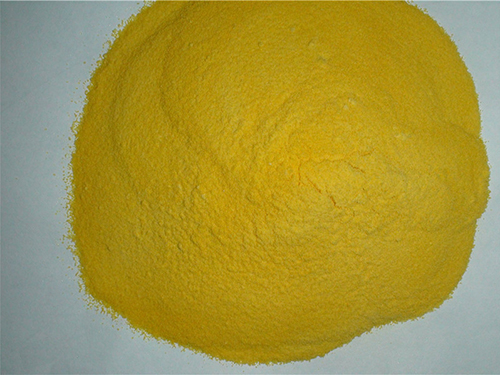Understanding Hydrolyzed Polyacrylamide and Its Applications in Various Industries
Understanding Hydrolyzed Polyacrylamide Applications, Benefits, and Considerations
Hydrolyzed polyacrylamide (HPAM) is a polymer derived from polyacrylamide that has undergone a hydrolysis process to yield a product that boasts unique properties and functionalities. Due to its versatility, HPAM has found widespread applications across various industries, including agriculture, wastewater treatment, petroleum recovery, and cosmetics. This article delves into the characteristics, advantages, and potential drawbacks of hydrolyzed polyacrylamide, exploring its significance in various fields.
Chemical Structure and Properties
Hydrolyzed polyacrylamide is a water-soluble polymer characterized by its acrylic amide repeat units, which have been partially hydrolyzed. The extent of hydrolysis can be tailored during production, influencing the properties of the final product. HPAM typically appears as a white to off-white powder or granules and can absorb significant amounts of water, forming a viscous solution. This property of high water retention is one of the reasons why HPAM is employed in numerous applications, particularly in agricultural settings where moisture conservation is crucial.
Applications Across Industries
1. Agriculture HPAM is widely used in agriculture due to its water retention capabilities. When applied to soil, it enhances the moisture content, thereby reducing water stress on crops, particularly in arid regions. Moreover, it aids in improving soil structure and promotes seed germination, leading to higher crop yields.
2. Wastewater Treatment In the realm of wastewater management, hydrolyzed polyacrylamide serves as a flocculating agent. It facilitates the aggregation of suspended particles, which makes it easier to separate solids from liquids during the treatment process. This is vital for industries that discharge significant amounts of wastewater, ensuring compliance with environmental regulations.
3. Oil Recovery In the oil and gas sector, HPAM is a key component in enhanced oil recovery (EOR) techniques. Its viscosity helps in displacing oil trapped in reservoir rock, improving the efficiency of extraction processes. The use of HPAM reduces the need for additional chemicals, making the extraction process more environmentally sustainable.
4. Cosmetics and Personal Care The cosmetic industry also benefits from hydrolyzed polyacrylamide, where it is employed as a thickening agent and emulsifier in products such as lotions, creams, and shampoos. Its ability to provide a smooth texture enhances the overall feel of personal care products.
Advantages of Hydrolyzed Polyacrylamide
Hydrolyzed polyacrylamide offers several advantages that make it a preferred choice in various applications
hydrolyzed polyacrylamide

- Biocompatibility HPAM is generally considered to be biocompatible and non-toxic, especially compared to other synthetic polymers, making it a safer option for use in agricultural and cosmetic applications.
- Versatility The customizable nature of HPAM, particularly regarding the degree of hydrolysis, allows for a wide range of formulations optimized for specific applications.
- Environmental Benefits Given its ability to enhance soil moisture retention and improve wastewater treatment processes, HPAM can contribute positively to environmental management practices.
Considerations and Limitations
While hydrolyzed polyacrylamide has numerous benefits, there are also considerations to keep in mind
- Environmental Impact Although HPAM is generally regarded as non-toxic, excessive use, particularly in agricultural settings, may lead to potential issues such as soil degradation and water pollution if not applied correctly.
- Cost Depending on the region and availability, HPAM can be relatively expensive compared to other soil conditioning agents or flocculants, which may deter some users.
- Performance Variability The effectiveness of HPAM can vary based on environmental conditions such as temperature, pH, and salinity, necessitating careful consideration during application.
Conclusion
In summary, hydrolyzed polyacrylamide stands out as a multifunctional polymer that significantly impacts diverse industries, from agriculture to oil recovery and cosmetics. Its unique properties provide advantages that enhance efficiency, sustainability, and product quality. However, like any chemical agent, responsible usage and awareness of potential environmental impacts are crucial. As technological advancements continue to evolve, the role of HPAM may expand further, solidifying its importance in our everyday lives and industries. Understanding its applications and limitations is essential for leveraging its benefits effectively.
-
Pbtc Scale InhibitorPBTC: A Scale Protector for Industrial Water TreatmentNewsAug.05,2025
-
Organic Phosphonate: An Efficient Defender in the Field of Scale InhibitionNewsAug.05,2025
-
Hydrolyzed Polymaleic Anhydride: Green Pioneer in Scale Inhibition FieldNewsAug.05,2025
-
PAPEMP Polyamino Polyether Methylene Phosphonic Acid For SaleNewsAug.05,2025
-
Flocculant Water Treatment: A Pioneer in Purification in the Field of Water TreatmentNewsAug.05,2025
-
Benzyl Isothiazolinone: An Efficient and Broad-Spectrum Antibacterial Protective GuardNewsAug.05,2025





